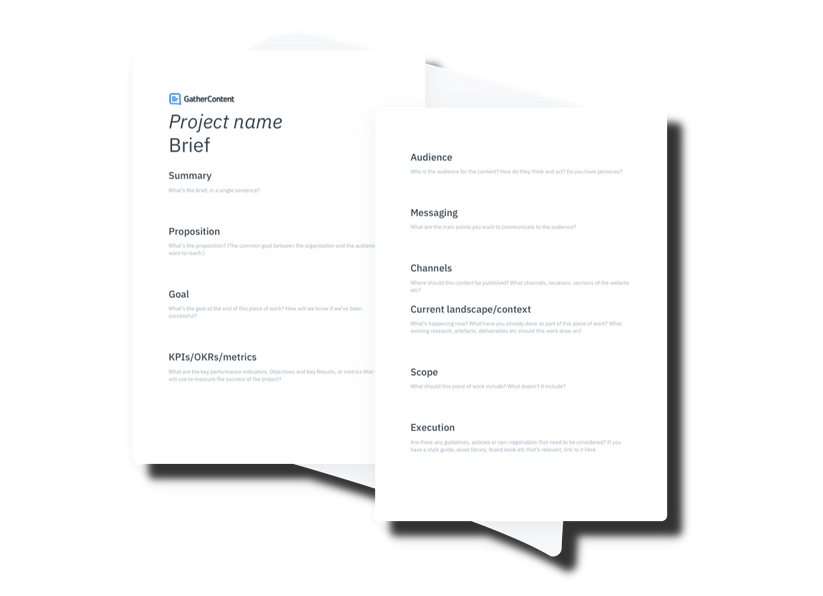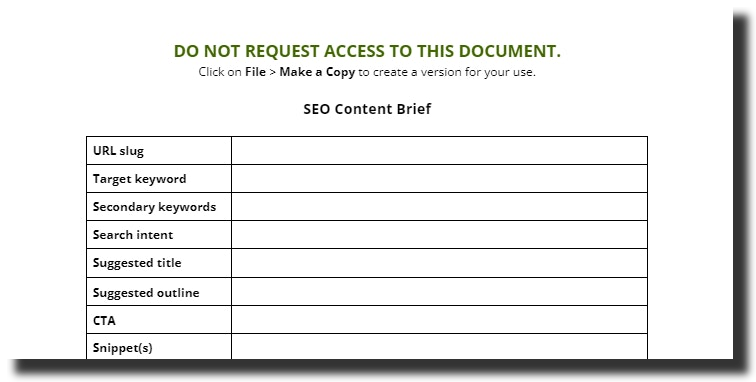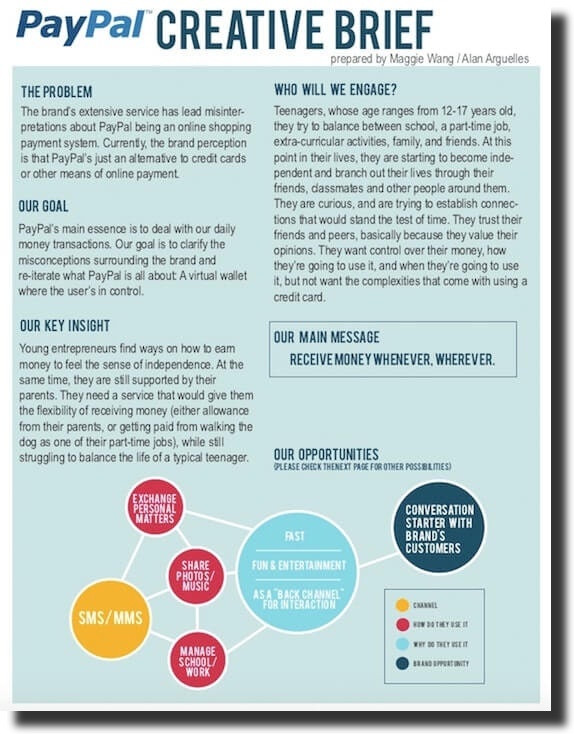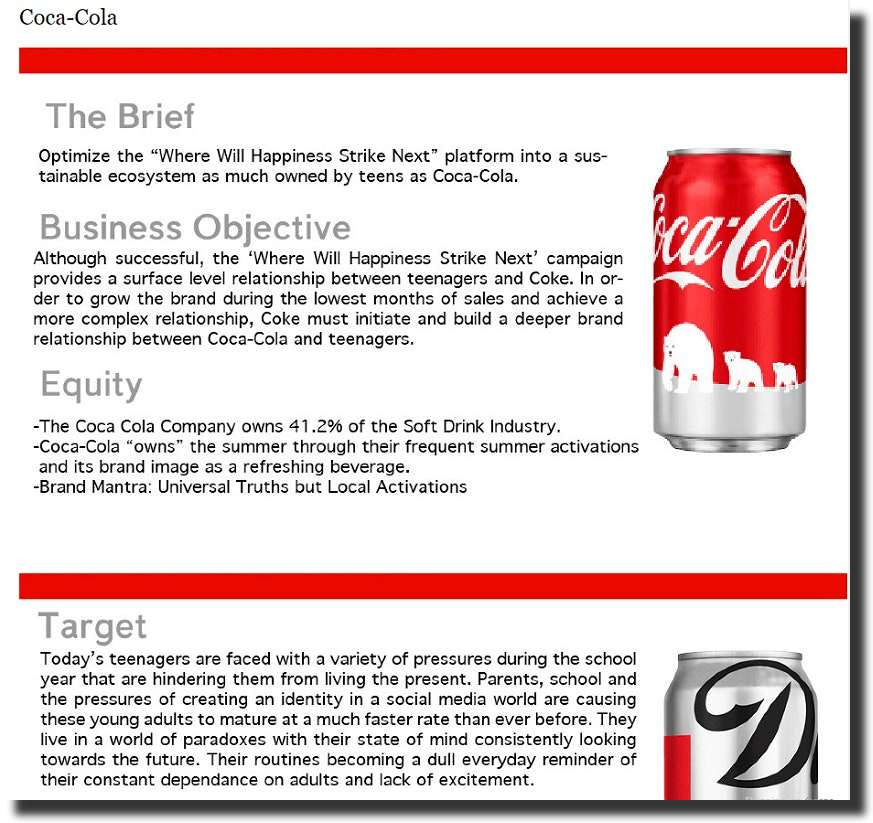Maintaining creative control and consistency can be challenging, especially when working with different people on a project. A successful creative brief accelerates your creative process by clarifying your priorities so that your team focuses on the right marketing initiatives.
Creative directors know that a well-written brief is a key to success. It helps you identify the client’s needs and priorities while guiding your creative direction. It’s essential for any business that wants to create great work. It outlines the goals of a project and improves communication within your team, keeping everyone on track.
If you’re wondering how to write a creative brief, this article is for you. Today, we’ll examine some of the most important points to remember when creating a creative brief.
What is a Creative Brief?
A creative brief outlines what you want your creative work to accomplish. It helps to ensure all aspects of the project are aligned. It should be specific, concise, and organized so the project can be managed and delivered on time. The brief should also include the budget and other relevant information pertinent to the project.
A creative brief helps keep everyone on track by specifying what needs to be done, when it needs to happen, and by who. Having a clear vision of what you want makes you more likely to achieve results that exceed your expectations.
Elements of a Creative Brief
A creative brief should be well-written and easy to understand. There are a few elements of a creative brief, including:
- The purpose of the project
- The target audience
- What the project is all about
- The market potential
- The business goals/objectives of the company sponsoring the project
- What are the deadlines?
- How will this project be funded?
- Who will be working on this project?
- What are some key deliverables?
- Are any changes or revisions required?
The Importance of Creative Briefs
A well-crafted creative brief can help a business identify and focus its creative efforts, limit distractions, and ensure that the end product is what the client wants.
Here are the reasons why creative briefs are important for your campaigns:
Creative Plan Documentation
Businesses must document their creative plans to create successful marketing campaigns. This involves creating brief descriptions of the concepts and ideas used in a given campaign. By doing this, businesses can ensure that their ideas are cohesive and use the right medium to reach their target audience.
Save You Time
The importance of creative briefs can not be understated when it comes to time management. When you clearly understand what your client is looking for and have all the necessary information at your fingertips, you can save yourself a lot of time in the process.
This is why it’s important to have creative briefs prepared well in advance so that you don’t waste any time trying to figure out what your client wants when you could be working on something more productive.
In addition, understanding what your target market wants will help you create products and services that appeal to them. By getting familiar with your client and their needs, you can ensure that your work is top-notch and meets their expectations.
Improves Accountability
A well-written creative brief can help to improve accountability within a company. Ensuring all communications are consistent makes tracking the effectiveness of a campaign becomes much easier. This information can then be used to make changes or improvements as necessary.
Prepare You for the Unexpected
The unexpected can throw a wrench into things. To account for this, it’s important to have a creative process that includes flexibility and improvisation. That’s where a creative brief comes in.
By keeping a creative process flexible and improvisational, you can better adapt when unexpected circumstances arise. This allows you to stay calm under pressure and devise solutions that work best for the situation at hand.
Speed Up Approvals
One of the benefits of having creative briefs is that they can speed up approvals. This means that your team can move quickly from idea to implementation, ensuring that your campaigns are as successful as possible.
Creative briefs also help reduce wasted effort. By setting clear goals and objectives, you can avoid spending time and resources on campaigns that don’t meet expectations or aren’t relevant to your target audience.
How to Write a Creative Brief?
When creating a creative brief, it is important to be concise and hit the points most important to your client. This can be done by breaking down the brief into specific objectives or by outlining the different areas in which you will need assistance from your client.
Here are the steps involved in the creative brief process:
1. Project Description
A creative brief should include a description of the project, an overview of what the client wants, and a list of all the deliverables. The outline should also include how long it will take to complete the project and any associated fees. It is important to include all relevant information so the client can understand what they are getting in return for their investment.
2. Target Audience
The target audience for your project will vary depending on the type of work you’re doing. For example, if you’re creating a website, your target audience will be people who use the internet. If you’re designing a marketing campaign, your target audience will be people who need or want the product or service you’re providing. In both cases, it’s important to know who your target market is and what they want.
Once you understand your target market, it is important to develop a message that speaks to them specifically. This message can be in graphics or text and should be catchy but not too salesy. You must also ensure that all your project elements align with this message – from design elements to copywriting tactics.
3. Tone and Messaging
The creative brief process should include a clear idea of the project’s tone. This can be anything from whimsical to serious and should be reflected in all aspects of the project, including design, copywriting, and photography. It is important to consider what type of client you are working with and tailor your approach accordingly.
For example, a corporate logo project may require a more formal tone than a children’s book.
Another important factor to consider when crafting a tone is your target audience. It is important to remember that different cultures have different expectations regarding tones if it’s for public consumption. For example, Japanese culture tends to be more formal than American culture, so consider that when designing your project.
4. Main Business Objectives
Creative briefs should outline the specific objectives of a project, including why it is being created, what the audience is expected to gain from it, and what goals the client or team hopes to achieve. This information can help ensure that all project elements are aligned and that everyone involved understands their role in its success.
Some common objectives for creative projects include developing an idea or concept, increasing brand awareness, creating marketing materials, and creating unique content. It can be helpful to think about these objectives in terms of user needs and wants, as this will help create more effective strategies.
5. Competitors
A creative brief should include an overview of your competitors, what they are doing well, and where you think you can improve. It is a good idea to research your competitors in advance so that you have a better understanding of their strategies and tactics. This will help you create advertisements that are effective and unique. Be sure to focus on what differentiates you from your competitors, and ensure that your message is clear to viewers.
6. Reference Material
When creating a creative brief, it’s important to include information to help the team better understand the project. This can include references to previous projects or other pieces of reference material.
Samples of designs or concepts used in the project can also be helpful. By providing this information, the team will better understand what they’re working on and can make better decisions while designing the project.
7. Essentials
When crafting a creative brief, it’s important to remember the essentials, such as strict guidelines about what to include in creative assets. While these strict rules may seem restrictive initially, they ultimately help create a unified branding strategy across multiple markets. By adhering to these guidelines, companies can ensure that their products and services are consistently perceived in the best possible light.
Types of Creative Briefs
Here are four types of briefs:
1. Ideation Brief
In an ideation brief, the client gives you an idea for a project they’d like you to work on. This might be something as simple as a logo or more complex, such as designing a website or creating a product.
2. Research Brief
A research brief is similar to an ideation brief but focuses on gathering information about a certain topic before giving you direction. This might be as simple as finding statistics about a certain industry or researching different layout options for a website.
3. Design Brief
The design brief is exactly what it sounds like- it tells you what the client wants the final product to look like. This might be anything from developing a color palette to creating wireframes and mockups.
4. Project Brief
A project brief is similar to a design brief, but it specifies all the specific details of the project- such as the target market, requirements, and timeline. This is helpful if you don’t know much about the project before starting work or if many changes need to be made along the way.
5. Brand Brief
A brand brief is a document that provides specific instructions about how a product or service should be marketed and sold. It is essential for any business looking to launch a new product or engage in marketing. A brand brief should include details about the product or service, who will likely purchase it, and how they should be targeted.
6. Advertising Brief
They are concise documents outlining an advertising campaign’s creative concept. The brief should include the target audience, the campaign’s objectives, and the proposed creative concepts.
7. Client Brief
A client brief is a document that provides summarized information about a company or individual. This document can include things like their mission, goals, and key players.
Creative Brief Sample Template
A creative brief sample template is a great tool if you’re new to creative briefs or just starting to create them for your projects.
Following are some of the creative brief examples:
GatherContent

Omniscient Digital
This template includes everything from the project summary to the key performance indicators (KPIs) and budget. Fill it out and make it available to your team.

A comprehensive content brief used by Omniscient Digital is one of the best creative brief examples. It includes keywords, SEO metadata, audience descriptions, search intent, and competitor content.
PayPal

As you can see, this marketing campaign brief is not for writers but focuses on the brand’s marketing strategy, which includes key insights and PayPal’s brand statement. The sample creative brief for PayPal shows how content differs from creative briefs.
Coca-Cola

As one of the more detailed examples of creative briefs on our list, this Coca-Cola brief illustrates several important lessons. Besides giving a basic description of the target audience, it also explains how the proposed campaign should change their brand perception. Additionally, it provides campaign ideas to inspire, demonstrating how the information, in brief, could be used.
UPQODE Will Help You Refine Your Marketing Goals with Precisely Drafted Creative Briefs!
A creative brief is an essential part of any design project and can help to ensure that your ideas are expressed clearly and concisely. A well-crafted creative brief can also establish consensus amongst various team members, ensuring everyone is on the same page from start to finish.
So if you’re looking for a way to improve communication within your design team or want to ensure that all stakeholders are on board with your vision, then a Creative Brief may be just what you need.
Let UPQODE take the guesswork out of marketing by helping you create a clear and concise creative brief that aligns with your business objectives.



